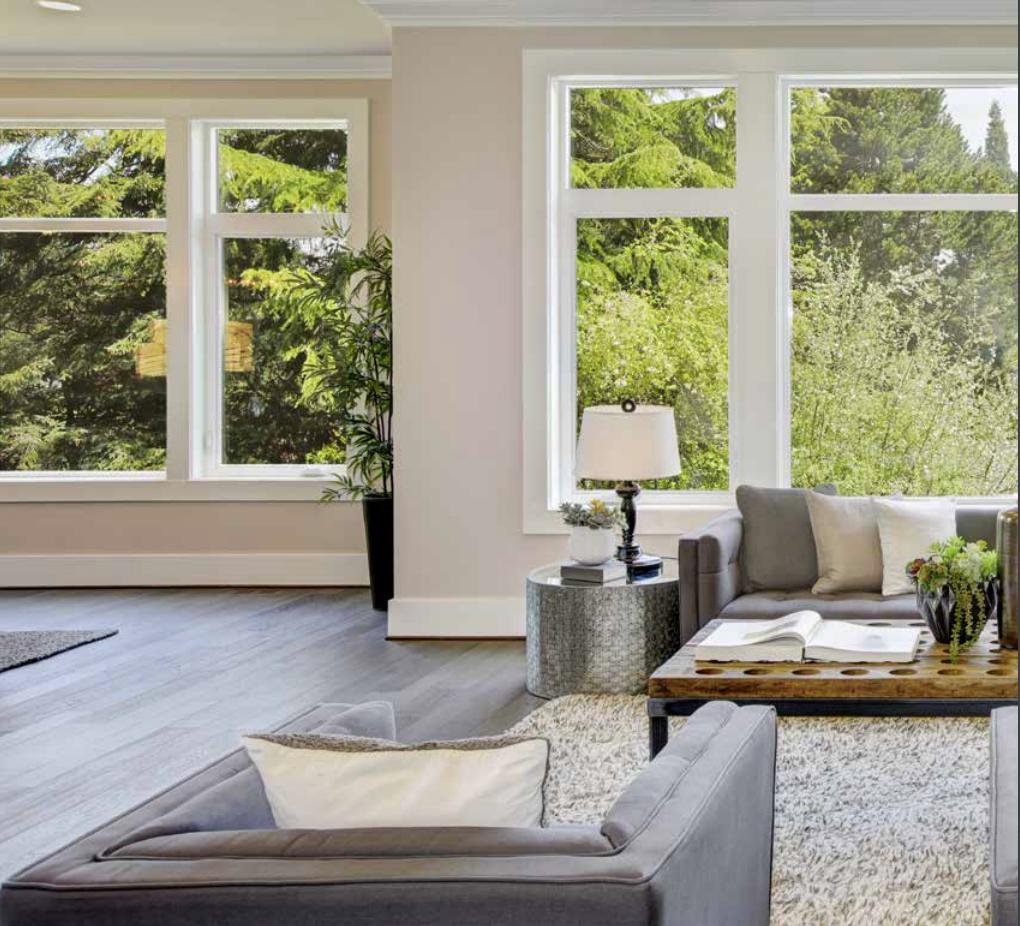
The Most Affordable Replacement Windows in 2023
In 2023, homeowners and property developers alike are continually seeking ways to maximize their investments. One area that often requires attention, particularly in older properties, is window replacement. With a plethora of options available, how does one navigate the balance between cost and quality? Let’s delve into the most affordable replacement windows this year and what you should consider when on a budget.
COMPARE WINDOW QUOTESUnderstanding the Basics: Why Replace Windows?
Before diving into the most affordable options, it’s essential to understand why window replacement can be a necessary venture:
- Energy Efficiency: Outdated windows often have poor insulation, leading to higher energy bills.
- Aesthetic Upgrade: Modern windows can significantly enhance the curb appeal of a property.
- Improved Functionality: Newer windows typically offer smoother operation and better locking mechanisms.
- UV Protection: Modern windows can provide protection against harmful UV rays.
Top Affordable Replacement Window Options in 2023:
- Vinyl Windows:
- Overview: Vinyl windows remain a popular choice for many homeowners due to their durability and affordability. They resist fading and don’t require painting.
- Cost: On average, vinyl windows can range from $200 to $700, including installation, depending on size and style.
- Aluminum Windows:
- Overview: These are lightweight, durable, and resistant to rust. Aluminum windows are ideal for larger window sizes and sliding doors.
- Cost: Generally, these fall within the range of $400 to $1,200, including labor.
- Composite Windows:
- Overview: Made from a blend of materials, typically wood pulp and plastic, composite windows resist rot and have a more traditional wooden window appearance.
- Cost: Prices vary, but you can expect to pay between $300 and $1,000 per window.
- Single-Pane Windows:
- Overview: While not as energy-efficient as double or triple pane options, single-pane windows are the most affordable choice.
- Cost: Prices can range from $100 to $300, but be wary of long-term energy costs.

Factors to Consider for Cost-Effective Choices:
- Installation Costs: The window’s price is just one component. Installation can sometimes match or even surpass the window’s cost. Always get a full quote.
- Energy Savings: An inexpensive window might cost you more in the long run if it’s not energy efficient. Consider potential energy savings as part of the total value.
- Warranty: Ensure your affordable window option comes with a decent warranty. This can save money in potential future repairs or replacements.
- Maintenance: Some windows might be cheaper initially but require regular maintenance. Factor in these costs over the window’s lifespan.
Shopping Tips:
- Bulk Discounts: If you’re replacing multiple windows, ask suppliers about bulk discounts.
- Off-Season Shopping: Some contractors and suppliers might offer discounts during their off-peak seasons.
- Local Incentives: Check for local or state energy rebates that might be available when installing energy-efficient windows.
- DIY Installation: While not recommended for everyone, those with some home improvement experience might consider self-installation to save on costs.
In 2023, as with any year, it’s vital to conduct thorough research and gather multiple quotes when considering window replacement. While affordability is a key consideration, always remember to weigh the long-term value and potential savings associated with your choice. Making an informed decision will ensure you enjoy the benefits of your new windows for years to come.

Top Signs That It’s Time for Replacement Windows
Windows play a pivotal role in our homes. They let in light, keep out the elements, and often provide a pleasant view of our surroundings. But like every aspect of our homes, windows don’t last forever. Here are the top signs that indicate it might be time to invest in replacement windows:
1. Drafts and Temperature Fluctuations
If you can feel a breeze coming in when your windows are closed, or you notice that certain rooms in your home are colder or hotter than others, it’s a clear indication of failing window insulation. Drafty windows can significantly increase your energy bills as your heating and cooling systems work overtime.
2. Difficulty in Opening or Closing
If your windows no longer open or close smoothly, or perhaps they don’t stay open without being propped up, it’s a sign that they have reached their lifespan or are improperly balanced. This can be a safety hazard, especially in emergency situations.
3. Condensation Between Panes
Seeing fog or condensation between double or triple pane windows means the seal has failed, allowing moisture to enter. This reduces the window’s insulating properties and could even lead to mold growth.
4. Decaying Frames
Wooden window frames are particularly prone to rot and decay if not regularly maintained. If the wood is soft to touch or shows visible signs of deterioration, it’s time for a replacement.
5. Increased Energy Bills
An unexpected increase in your energy bills, particularly during the hotter or colder months, can indicate that your windows are no longer insulating your home effectively.
6. Outside Noise
If you start to notice that you can hear a lot more external noise inside your home than before, your windows might not be providing adequate sound insulation anymore.
COMPARE WINDOW QUOTES7. Visible Damage
Cracks, chips, or other forms of visible damage not only look unattractive but can also compromise the structural integrity of the window.
8. Fading Furnishings
Ultraviolet rays from the sun can cause furniture, curtains, and even flooring to fade over time. Modern windows often come with UV protection which can prevent this, so if you notice significant fading, your current windows may not be up to par.
9. Recurrent Repairs
If you find yourself constantly repairing your windows, whether it’s the locks, seals, or the glass itself, it might be more cost-effective in the long run to replace them entirely.
10. Aesthetic Outdatedness
While not necessarily a functional issue, old and outdated windows can detract from your home’s overall aesthetics and curb appeal. If your windows look worn out, it might be time for a refresh.

Windows are more than just panes of glass in our walls. They ensure our homes remain comfortable, energy-efficient, and secure. Paying attention to these signs will not only help you maintain the integrity of your home but also lead to potential energy savings and increased property value in the future. If you notice any of these signs, consider getting a professional assessment to determine the best course of action.
COMPARE WINDOW QUOTESBenefits of Replacing Your Windows
Updating your windows isn’t just about fixing problems or improving aesthetics. Replacing windows can bring a plethora of benefits that affect everything from your daily comfort to your wallet. Let’s delve into some of the most compelling advantages of window replacement:
1. Enhanced Energy Efficiency
Modern windows are designed to offer better insulation. By preventing drafts and reducing the amount of UV and infrared light that enters without limiting the visibility, energy-efficient windows can save you a substantial amount on your heating and cooling bills.
2. Improved Home Comfort
With better insulation and advanced design, new windows can help maintain a consistent indoor temperature, keeping your home warm in winter and cool in summer. This adds to the overall comfort of your living spaces.
3. Increased Home Value
New windows can boost the curb appeal of your home. Moreover, potential buyers often appreciate the value of new, energy-efficient windows, making your home more attractive in the real estate market.
4. Reduced External Noise
Upgraded windows often come with better soundproofing qualities. If you live near a busy road or a noisy neighborhood, replacement windows can help create a quieter and more peaceful indoor environment.
5. Enhanced Security
Modern windows often incorporate advanced security features, such as multiple locking points and tougher materials, making it harder for potential intruders to gain access.
6. Easier Maintenance
Today’s windows are designed with ease of use and maintenance in mind. Features like tilt-in sashes make cleaning a breeze, while materials used resist decay, warping, and fading, reducing the frequency and cost of repairs and maintenance.

7. Protection for Interior Items
With windows that filter out UV rays, you can protect the fabrics of your furniture, carpets, and curtains from fading prematurely. It’s a subtle benefit, but over time, you’ll notice your interiors retain their color and vitality longer.
8. Environmentally Friendly
By reducing the energy requirements of your home, you’re not only saving money but also reducing your carbon footprint. This means you’re playing a part in conserving the environment for future generations.
9. Variety of Customization Options
With advancements in window technology, there are a plethora of design and customization options available. This means you can find windows that perfectly fit the design aesthetic of your home.
10. Better Indoor Air Quality
Well-sealed windows help reduce the amount of dirt, dust, and allergens that can enter your home. Coupled with the fact that modern windows can prevent mold growth due to better moisture control, the result is a healthier indoor environment.
COMPARE WINDOW QUOTESWindow replacement is an investment that offers both immediate and long-term dividends. From tangible benefits like savings on energy bills and increased home valuation to intangibles such as comfort and aesthetic appeal, the advantages make the decision worthwhile. As with any major home improvement project, it’s essential to do thorough research and consult with professionals to ensure you make the right choices for your specific needs.
What is a Realistic Budget for Replacement Windows?
Planning a window replacement project for your home? Budgeting accurately is crucial to ensure that you get the best value for your money and avoid unexpected costs. The budget for replacement windows can vary widely based on various factors. Here’s a breakdown to help you establish a realistic budget:
1. Type of Windows
Different window types come with varying price points. For instance:
- Single-hung windows are typically more affordable than double-hung windows.
- Casement windows, which open outwards with a crank, might cost more than traditional sliding windows.
- Bay and bow windows, with their expansive and intricate design, can be pricier than standard fixed windows.
2. Material Used
The material of the window frame affects the cost:
- Vinyl is often the most affordable option and offers good insulation.
- Wood offers a classic appearance and good insulation but might be more expensive and requires more maintenance.
- Aluminum or metal frames are durable but may not offer as much insulation as other types.
- Fiberglass is more expensive than vinyl but offers better durability and insulation.
3. Size and Customization
Custom-sized or uniquely shaped windows will cost more than standard sizes. Special finishes, unique colors, or additional features like built-in blinds or decorative glass can also add to the cost.

4. Energy Efficiency
Windows that are Energy Star rated or have features like double or triple pane glass, gas fills, or low-e coatings might have a higher upfront cost. However, they can save money in the long term through reduced energy bills.
5. Labor and Installation
While the cost of the window itself is a significant part of the budget, don’t forget to factor in labor. The complexity of the project, the reputation of the contractor, and your geographical location can influence labor costs.
6. Old Window Removal
Some companies include the removal of old windows in their installation fee, while others might charge extra. It’s essential to clarify this to avoid surprise costs.
7. Warranty
A window with a comprehensive warranty might cost a bit more upfront but can save you money if problems arise down the line.
8. Additional Features
Features like UV protection, noise reduction, or impact resistance can add to the cost.
COMPARE WINDOW QUOTESAverage Costs
Given these variables, here’s a rough estimate of average costs in 2023:
- Vinyl windows: $250 to $800 per window
- Wood windows: $600 to $1,200 per window
- Aluminum windows: $400 to $1,200 per window
- Fiberglass windows: $500 to $1,500 per window
Labor costs: $100 to $250 per window, depending on complexity and region.
Setting a realistic budget for window replacement involves considering the type, material, and additional features of the window, along with labor and potential extra costs. Getting multiple quotes from different suppliers and installers, and doing thorough research, can help ensure you get the best deal without compromising on quality.

Top Tips to Cut Costs on Windows without Sacrificing Quality
When considering window replacements, homeowners are often faced with the challenge of managing their budget without compromising the quality of their investment. Fortunately, there are strategies to ensure that you get the best value for your money. Here are some top tips to cut costs without sacrificing window quality:
Research and Compare
Spend time researching various brands, materials, and window types. By comparing different options, you can identify the most cost-effective choice that doesn’t skimp on quality.
Buy at the Right Time
Just like many other industries, window manufacturers and installers might have off-peak seasons where they offer discounts. Consider purchasing and installing windows during these times to benefit from potential promotions or reduced rates.
Consider Energy-Efficient Options
While energy-efficient windows might have a higher upfront cost, they can result in significant savings on your energy bills in the long run. Look for windows with a good Energy Star rating.
Opt for Standard Sizes
Custom windows are typically more expensive than standard-sized ones. If possible, choose standard sizes for your replacement windows. If you must go custom, discuss with your contractor about the most cost-effective custom options.
Bundle Your Projects
If you plan on replacing multiple windows, or have other home renovation projects in mind, bundling them together can often get you a bulk discount from contractors or suppliers.
COMPARE WINDOW QUOTESNegotiate
Don’t be afraid to negotiate with suppliers or contractors. They might be willing to give a discount, throw in an additional service, or upgrade your choice for a reduced price.
Skip Unnecessary Extras
While features like between-the-glass blinds or decorative glass can be appealing, they add to the cost. Decide what’s essential for your needs and what you can do without.

DIY Where Possible
While it’s not recommended to install windows on your own unless you have experience, you can save on labor costs by doing some tasks yourself, such as removing old windows or finishing touches after installation.
Seek Recommendations
Ask friends, family, or neighbors for recommendations on affordable suppliers or contractors known for their quality work. Personal references can sometimes lead to discounts.
Review Warranty Options
A good warranty can save you money in the long run. While it’s tempting to opt for cheaper windows with limited warranties, investing in a window with a comprehensive warranty can prevent additional costs down the line.
With some research, smart decisions, and effective negotiation, you can significantly cut costs on your window replacement project without sacrificing the quality and durability of your investment. Always prioritize long-term value over short-term savings.
Top 10 Window Replacement Companies in 2023
The window replacement industry has witnessed continuous innovation and growth, with many companies striving to offer the best products and services. If you’re considering a window replacement project in 2023, here are the top 10 window contractors that have stood out in terms of quality, reliability, and customer satisfaction:
COMPARE WINDOW QUOTES1. Andersen Windows & Doors
Andersen is a longstanding industry leader known for its range of high-quality windows, including its 400 Series, which offers excellent energy efficiency and design flexibility.
2. Pella Windows & Doors
Pella is well-regarded for its innovative window solutions. Their designer series, in particular, is praised for its between-the-glass blinds and shades.
3. Marvin Windows and Doors
Specializing in both standard and custom windows, Marvin is renowned for its craftsmanship, durability, and its wide range of materials and styles.
4. Milgard Windows & Doors
With a focus on innovation, Milgard offers a vast array of vinyl, wood, fiberglass, and aluminum windows, with an emphasis on energy efficiency and aesthetics.
5. Simonton Windows & Doors
Having earned several awards for its services, Simonton is known for its high-quality vinyl windows and excellent customer service.
6. JELD-WEN Windows & Doors
JELD-WEN offers a comprehensive range of window types and has carved a niche for itself with its wood windows that beautifully merge tradition with modern technology.
7. Harvey Building Products
Harvey is especially popular in the Northeastern US, recognized for its premium vinyl and wood window options that cater to both residential and commercial needs.

8. Alside
Offering vinyl windows with a balance of style and affordability, Alside has a strong reputation for delivering durable products with a lifetime warranty.
9. Renewal by Andersen
A subsidiary of Andersen, this company specializes in window replacement, particularly with its proprietary Fibrex material, which combines the best of wood and vinyl.
10. Window World
Operating as one of the largest home improvement resources in the US, Window World offers an extensive range of window styles with a strong focus on affordability and energy efficiency.
While these companies are among the best in 2023, it’s essential to do your research based on your specific needs, location, and budget. Always read reviews, ask for recommendations, and get multiple quotes before making a decision. Your window replacement is a significant investment, and finding the right company is crucial for a seamless experience and long-term satisfaction.
COMPARE WINDOW QUOTESConsidering Energy Efficiency: Understanding Window Energy Ratings
When choosing replacement windows, energy efficiency is one of the most critical aspects homeowners should consider. Not only do energy-efficient windows help reduce energy bills, but they also offer better comfort throughout the year. One of the primary ways to gauge the energy performance of a window is through its energy ratings. Let’s dive deeper into understanding these ratings:
What are Window Energy Ratings?
Window energy ratings provide a measure of a window’s overall energy efficiency. Several organizations and certification programs offer these ratings, but the most recognized in the U.S. is the National Fenestration Rating Council (NFRC). The NFRC label provides standardized information on how a window will perform under specific conditions.

Key Components of Window Energy Ratings:
- U-Factor (U-Value)
- What it measures: The U-factor measures the rate of heat transfer or how well the window insulates. It indicates how well a window keeps heat inside your home.
- Reading the rating: Lower U-values are better. A lower U-factor means the window has better insulating properties. Typical values range from 0.20 to 1.20.
- Solar Heat Gain Coefficient (SHGC)
- What it measures: SHGC measures how much solar radiation (or heat) enters through a window. It’s a crucial factor in warmer climates where preventing heat from entering a home can save on cooling costs.
- Reading the rating: Lower SHGC values are better for warmer climates as they let in less solar heat. The rating ranges between 0 and 1; a lower value indicates less solar heat transmittance.
- Visible Transmittance (VT)
- What it measures: VT measures the amount of visible light the window lets through.
- Reading the rating: A higher VT means more natural light is let into your home. However, it’s a balance, as more light can also mean more heat.
- Air Leakage (AL)
- What it measures: This rating gauges the rate at which air passes through the joints of a window.
- Reading the rating: Lower AL values are better, indicating less air leakage. Look for values typically at or below 0.3.
- Condensation Resistance (CR)
- What it measures: CR measures the ability of a window to resist condensation formation on its interior surface.
- Reading the rating: Higher values (typically between 0 and 100) mean better resistance to condensation.
Why Are These Ratings Important?
Understanding these energy ratings can guide you in selecting windows tailored for your region’s climate and your home’s specific needs. For instance, in colder climates, a window with a low U-factor would be ideal to retain heat within the home. Meanwhile, in warmer climates, windows with a low SHGC would be beneficial to prevent excessive heat from entering the home.
Windows play a vital role in the energy performance of your home. By understanding window energy ratings, homeowners can make informed decisions and select windows that not only enhance the comfort of their living spaces but also lead to substantial savings in the long run. Remember, while energy ratings are a crucial factor, it’s also important to consider the window’s style, functionality, and durability when making a choice.
COMPARE WINDOW QUOTES
Leave a Reply